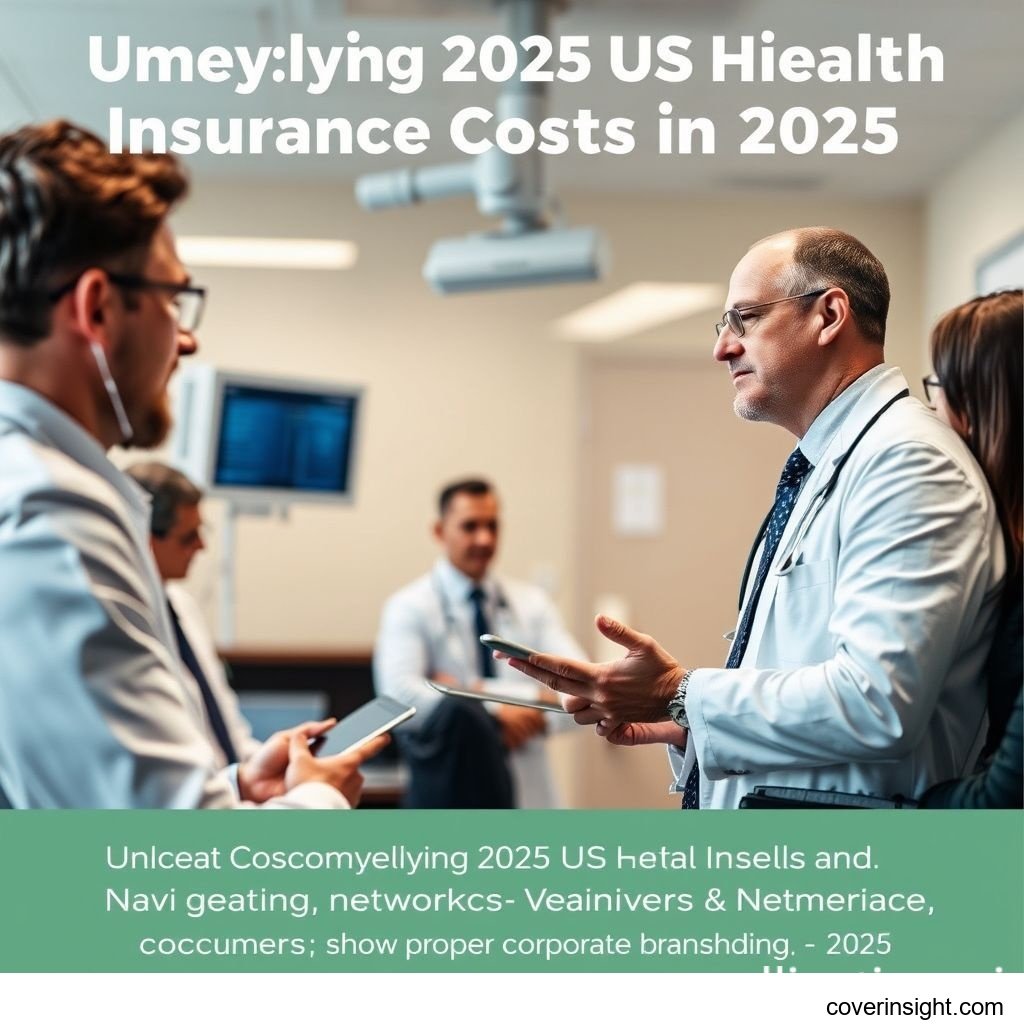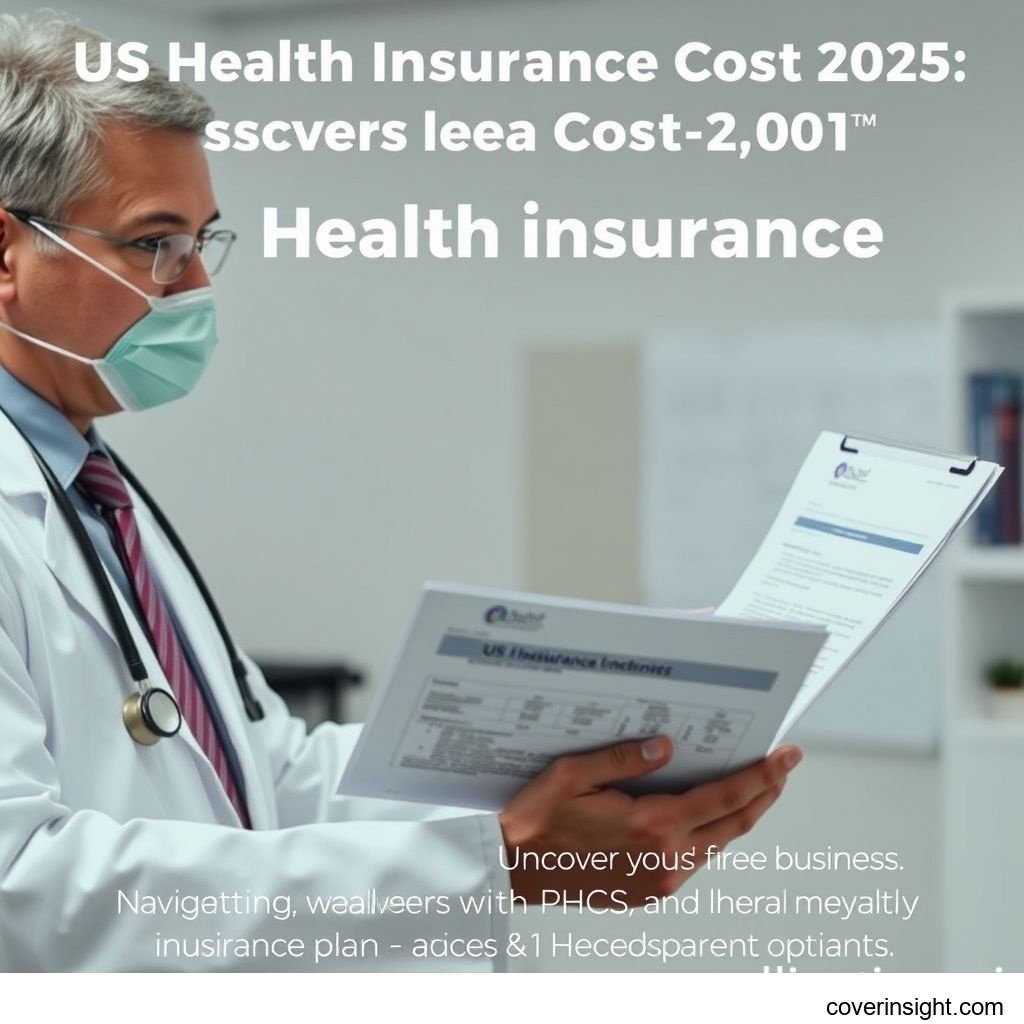Unlock US Health Insurance Costs in 2025
Introduction
As we stride into 2025, understanding US health insurance costs remains a top priority for millions of Americans. The landscape of healthcare in the United States is notoriously complex, often feeling like a puzzle with constantly shifting pieces. For individuals, families, and businesses alike, deciphering premiums, deductibles, and out-of-pocket maximums is crucial for both financial stability and access to vital medical care. This guide aims to cut through the noise, providing clarity on what to expect, how to manage expenses, and ultimately, how to make informed decisions about your health coverage in the coming year. Getting a handle on these costs isn't just about saving a buck; it's about securing your peace of mind and protecting your financial future from unexpected medical bills that can, frankly, knock you for a loop. For more general resources, you might find "Insurance Resources Global" a helpful starting point.
Coverage Details
What’s Included
A typical health insurance plan in the US, especially those complying with the Affordable Care Act (ACA), covers a broad spectrum of "essential health benefits." These are designed to ensure comprehensive care and generally include: outpatient care (doctor visits), emergency services, hospitalization, maternity and newborn care, mental health and substance use disorder services, prescription drugs, rehabilitative and habilitative services and devices, laboratory services, preventive and wellness services (like immunizations and screenings), and pediatric services, including oral and vision care for children. Many plans also offer some form of telehealth services, a convenience that really took off during the pandemic and has stuck around.
Common Exclusions
While health insurance aims to cover many needs, it's equally important to know what generally isn't included. Common exclusions often involve cosmetic procedures (unless medically necessary, such as reconstructive surgery after an accident), experimental or investigational treatments not yet approved by regulatory bodies, and sometimes specific types of long-term care services like nursing home care beyond a limited period. Off-label drug use, where a drug is prescribed for a condition it isn't formally approved for, can also be excluded. Furthermore, basic dental and vision care for adults is frequently separate from standard medical insurance, requiring standalone plans or riders. Don't assume everything under the sun is covered; always read the fine print!
Cost Analysis
Price Factors
The price you pay for health insurance in 2025 is a complex stew of various ingredients. Key factors include your age (older individuals typically pay more), your location (costs vary significantly by state and even within different zip codes due to local healthcare costs and competition), and the type of plan you choose (HMOs, PPOs, EPOs, and POS plans each have different rules about networks and referrals, impacting premiums). The "metal tier" of your plan—Bronze, Silver, Gold, or Platinum—also plays a huge role; Bronze plans have lower premiums but higher out-of-pocket costs, while Platinum plans are the inverse. Tobacco use can lead to higher premiums in some cases. Lastly, the number of individuals covered under the plan will naturally increase the total cost.
It’s worth noting that many Americans, especially those with lower incomes, are eligible for subsidies (tax credits) that significantly reduce their monthly premiums when purchasing plans through the Health Insurance Marketplace. According to data from the Centers for Medicare & Medicaid Services (CMS), millions of Americans continue to benefit from these subsidies, making coverage much more affordable. For instance, in a recent case study from a family in Ohio, a couple earning a moderate income was able to secure a Silver-tier plan for less than $100 a month after subsidies, which would have cost over $800 without assistance. This really highlights how vital it is to check your eligibility.
Saving Tips
Navigating the cost of health insurance doesn't have to feel like you're caught between a rock and a hard place. Here are some pointers to potentially ease the financial burden:
-
Utilize Subsidies: If buying coverage on Healthcare.gov or your state's exchange, check if you qualify for premium tax credits or cost-sharing reductions. Even if you think you earn too much, it's always worth checking.
-
Employer-Sponsored Plans: If available, employer plans are often your best bet, as employers typically cover a significant portion of the premium.
-
Compare Plans Meticulously: Don't just stick with what you had. Review your options annually during open enrollment. A slightly different plan might offer the same benefits for less. Our "Essential 2025 Guide: Best US Health Insurance Costs" delves deeper into this.
-
Consider High-Deductible Health Plans (HDHPs) with HSAs: If you're generally healthy and don't anticipate many medical expenses, an HDHP combined with a Health Savings Account (HSA) can lower your monthly premiums. The HSA also offers tax advantages for saving and spending on qualified medical expenses.
-
Focus on Preventive Care: Staying healthy through regular check-ups and screenings (which are often covered at 100% by most plans) can prevent costly illnesses down the line. An ounce of prevention is truly worth a pound of cure in healthcare.
-
Negotiate Medical Bills: If you receive a large bill, don't be afraid to call the provider and negotiate, especially if you're paying out-of-pocket or your insurance didn't cover as much as you expected. Sometimes, a simple phone call can save you a bundle.
FAQs
How much does health insurance cost?
The actual cost varies wildly, but for 2025, individual health insurance premiums on the marketplace without subsidies could range from an average of $400 to over $800 per month, depending on factors like age, location, and plan type. For a family of four, an unsubsidized plan could easily top $1,500 to $2,500 monthly. For instance, data from the Kaiser Family Foundation (KFF) consistently shows average premiums for employer-sponsored family coverage exceeding $22,000 annually, with employees typically contributing around $6,500 of that cost. Remember, these are averages, and your specific cost might be higher or lower.
What affects premiums?
Premiums are primarily affected by your age, where you live, the type of plan you select (e.g., Bronze vs. Gold, HMO vs. PPO), whether you use tobacco, and the number of people covered under your policy. Even local competition among insurers can play a role.
Is it mandatory?
While there is no longer a federal penalty for not having health insurance (as of 2019), some states, such as Massachusetts, New Jersey, Rhode Island, and Washington D.C., do have individual mandates with penalties for non-compliance. Regardless of mandates, having coverage is highly advisable to protect yourself from potentially crippling medical debt. You can check with your "State Insurance Departments" for specific requirements where you live.
How to choose?
Choosing a plan involves assessing your needs, budget, and risk tolerance. Consider your typical medical expenses, preferred doctors (are they in-network?), and prescription drug needs. Look at the balance between premiums, deductibles, co-pays, and the out-of-pocket maximum. Don't forget to check customer service ratings and review networks carefully. It's often helpful to sit down and make a pros and cons list tailored to your unique situation. For general guidance on the US insurance landscape, our "US Insurance Home" page might offer a good starting point.
Consequences of no coverage?
The consequences of going without health insurance in the US can be dire. A sudden illness or accident can lead to overwhelming medical debt, potentially spiraling into bankruptcy. Without insurance, you might delay or forgo necessary medical care, leading to worsening health conditions that become more expensive to treat down the line. Essentially, you're rolling the dice on your financial and physical well-being. The "National Association of Insurance Commissioners" provides resources on consumer protections related to insurance.
Author Insight & Experience
As someone living in the US and having navigated its healthcare system for years, I've come to realize that the single most powerful tool an individual possesses is knowledge. It's easy to feel overwhelmed, perhaps even defeated, by the sheer complexity and cost of health insurance here. I've personally experienced the frustration of trying to decipher confusing EOBs (Explanation of Benefits) and the relief of knowing I had coverage when an unexpected medical event hit. Based on my experience, investing time upfront to understand your options, checking every avenue for subsidies, and proactively managing your health can truly make a world of difference. It's not just about protecting your health; it's about protecting your entire financial future from a system that can, at times, feel like a financial minefield.








Comments